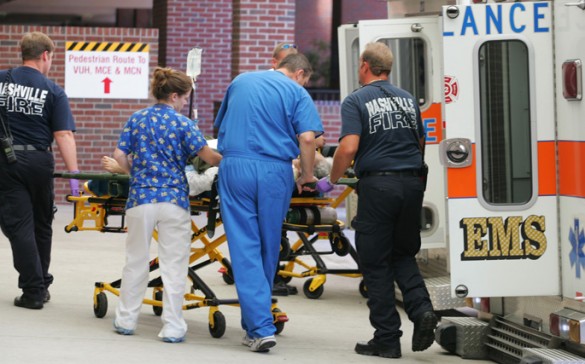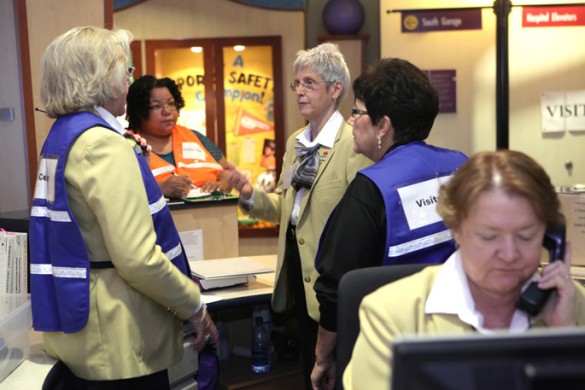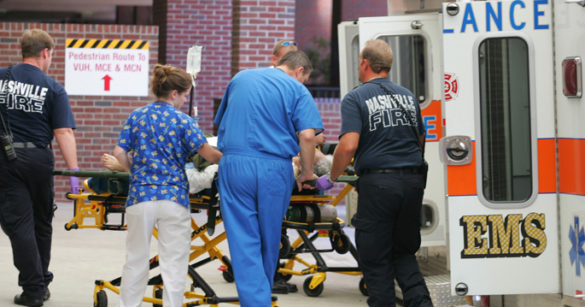
Vanderbilt University Medical Center will be one of several area hospitals and federal, state and local agencies participating in the 2013 Regional Hospitals Fall Severe Weather Exercise on Thursday, Nov. 7.
The scenario for the exercise, to be held sometime between 7 a.m. – 1 p.m., is a deadly Fall tornado and will also incorporate the “release” of a deadly chemical into the air that will require the deployment of the regional CHEMPACK program.
CHEMPACK is an ongoing initiative of the Center for Disease Control and Prevention’s (CDC) Division of Strategic National Stockpile (SNS), launched in 2003, which provides antidotes (three countermeasures used concomitantly) to nerve agents for distribution by state, local, and/or tribal officials throughout the nation.
The severe weather portion of the exercise will evaluate the effectiveness and capability of communication with hospitals and response agencies in the aftermath of a tornado, and the deadly chemical part of the drill will assess the hospitals’ ability to manage and care for a surge of patients, and the hospitals’ capability to protect patients, employees and visitors in addition to infrastructure during a hazardous material incident.
“This is an important learning opportunity for Vanderbilt University Medical Center and for the other regional participants in the drill,” said Pam Hoffner, MSN, R.N., director of Emergency Preparedness for VUMC. “Hospitals need to test their own plan, and we also need to test our ability to communicate with other hospitals, regional partners and agencies that respond during an emergency.”
On Wednesday, Nov. 6, the National Weather Service will send information to those participating in the exercise that will indicate that there is a possibility of dangerous weather on the following day. This is part of the exercise and does not mean that Nashville will actually be experiencing severe weather.
On the day of the exercise, VUMC and other participants, which includes the Tennessee Emergency Management Agency (TEMA), Davidson County’s Office of Emergency Management (OEM), the Tennessee Highway Patrol (THP), and other area hospitals, will receive information from the National Weather Service that the deadly weather is headed toward Nashville.
At that time a yellow alert, which tells faculty and staff to prepare to activate the emergency operations plan for a tornado, will be issued over the Public Address System and will begin and end with “This is a drill.” Then an orange alert, which indicates that the emergency operations plan should be activated, will be issued, again with the words “This is a drill.”
“We want staff to be able to respond on the fly,” Hoffner said. “We need to test everything in the moment vs. things being pre-planned. That’s the way you learn.”
After announcements to activate the yellow and orange alert are made, department managers, supervisors and charge nurses should perform the following tasks with their faculty and staff:
• Review yellow and orange alert tornado response procedures.
• Review the location of their safe place and command post in their work area.
• Activate their call trees for emergency operations to ensure call trees are accurate.
• Review the contents of the Emergency Operations Quick Reference Guide.
“If you look at the history of the area’s deadliest tornadoes, many have typically been in November and December,” Hoffner said. “It is an ideal time to practice our plan.”
Jeffrey Mangrum, R.N., administrative coordinator for Emergency Preparedness, agreed.
“This exercise will be a great learning opportunity for Vanderbilt and our community partners and agencies.”
Hoffner said that it’s essential during the exercise that managers and supervisors go over information with those in their area so that Vanderbilt can meet the regional exercise objectives. Staff should be able to verbalize what their duties would be.
She also said exercise evaluators will be placed throughout the Medical Center and at Vanderbilt Health One Hundred Oaks to evaluate faculty and staff response during exercise play.
The adult and pediatric emergency departments will receive paper “patients,” or paperwork, during the exercise as if the patients were being seen in the emergency departments.
The CHEMPACK portion of the exercise will test the ability of the Tennessee Highway Patrol to transport the antidotes either by ground or air.
For more information about the regional exercise, including a quick reference guide for what to do during yellow and orange alerts for tornado, visit http://emergency.vanderbilt.edu/ and click on “Emergency Guides.”















